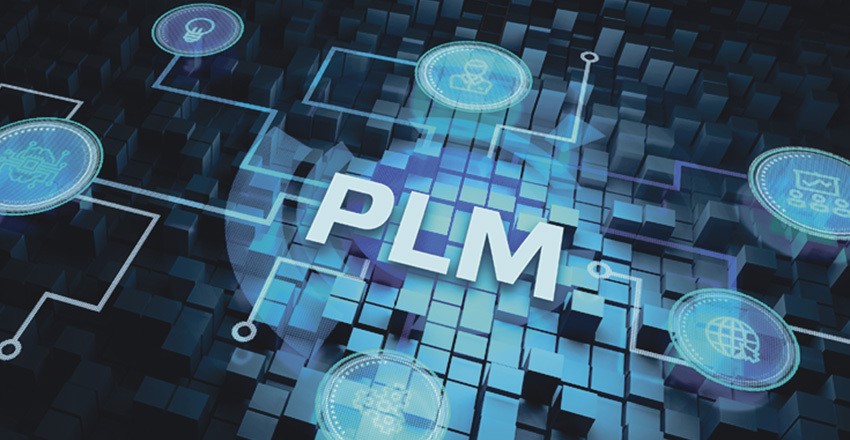
In today's competitive landscape, businesses rely heavily on robust Product Lifecycle Management (PLM) systems to streamline processes, enhance collaboration, and drive innovation. PLM helps your organization save millions of rupees, read how in our blog, 5 Ways PLM Can Save Your Company Millions and thus upgrading or migrating to a new plm system is very crucial for businesses!
As technology evolves, organizations often face the decision of upgrading their existing PLM systems (PLM upgrade) or migrating to newer platforms to meet current and future business needs. While the potential benefits of a new PLM are significant, the migration process itself can be complex and challenging.
Thus, this transition, known as PLM migration, requires careful planning, meticulous execution, comprehensive training, and dedicated support to ensure a smooth and successful adoption.
Let us first understand what PLM migration is!
PLM migration is the process of transferring processes, data, and configurations from an existing PLM system to a new one. This could include upgrading to a newer version of the same software or migrating to a completely different PLM solution. The goal is to leverage enhanced capabilities, improve system performance, and align with evolving business requirements.
Effective PLM migration is crucial for maintaining competitiveness and operational efficiency. It allows organizations to:
Enhance System Capabilities: Incorporate advanced features and functionalities offered by newer PLM solutions. Implementing PLM solutions can solve many of your problems. Find out which are those common challenges that can be solved with PLM in our blog, 7 Common Challenges Solved by Implementing PLM Solutions!
Improve Data Integrity: Ensure accurate and reliable data management throughout the product lifecycle.
Optimize Workflow Efficiency: Reduce time-to-market for products by streamlining processes.
Support Business Growth: Scale operations seamlessly and support expanding business needs.

Successful PLM migration begins with thorough planning. This phase involves several key steps:
Needs Assessment: Evaluate current PLM system capabilities and identify gaps that need addressing through migration.
Requirements Gathering: Engage stakeholders to gather requirements, including functionalities, integrations, compliance needs, and budget considerations.
Risk Assessment: Identify possible risks and develop strategies to mitigate these risks.
Timeline and Resource Allocation: Define a realistic timeline and allocate resources effectively to ensure timely and efficient migration.
Execution is where the migration plan formulated during the planning phase comes to life. It involves:
Migration of Data: Data transfer to a new PLM system from an old one, while ensuring integrity, accuracy, and completeness.
Configuration and Customization: Configure the new PLM system according to specific business processes and requirements. Customize functionalities as needed to optimize system performance.
Testing and Validation: Conduct rigorous testing to validate the migrated data, system functionality, and integration with other enterprise systems.
Transition: You should plan and implement a transition from the old system to the new one. Provide comprehensive training and support to users to facilitate adoption and minimize disruptions.
Effective training is essential for maximizing the benefits of a new PLM system. It ensures that users understand the system’s capabilities and functionalities, enabling them to work efficiently and productively. Key aspects of training include:
User Training Programs: Develop tailored training programs for different user groups, focusing on hands-on learning and real-world scenarios.
Documentation and Resources: Provide comprehensive user manuals, documentation, and online resources to support ongoing learning and troubleshooting.
Continuous Education: Offer periodic refresher courses and updates to keep users informed about new features and best practices.
Post-migration support is critical for maintaining system performance and addressing user queries and issues effectively. It includes:
Help Desk and Support Services: Establish a dedicated support team to respond to user inquiries, troubleshoot technical issues, and provide timely resolutions.
System Maintenance: Schedule regular system updates, patches, and maintenance to ensure optimal performance and security.
Feedback Mechanism: Implement a feedback mechanism to gather user input and continuously improve the PLM system based on user experiences and evolving business needs.
At Modelcam Technologies, we specialize in delivering comprehensive PLM solutions and services tailored to meet the unique needs of businesses in India, USA, and beyond. Our expertise spans PLM migration, data management, software customization, and ongoing support, ensuring seamless transitions and sustainable growth for our clients.
Whether you are considering a PLM upgrade, exploring new PLM software solutions, or seeking reliable PLM services, Modelcam Technologies is your trusted partner. Contact us now and accelerate your business success.
Navigating PLM migration requires a structured approach encompassing planning, execution, training, and support. By adhering to these four pillars, organizations can effectively manage the complexities of migration, maximize ROI from their PLM investments, and position themselves for long-term growth and innovation in today’s competitive market.
For more insights into PLM migration strategies and solutions, visit Modelcam Technologies and explore our comprehensive PLM services in India and PLM services in the USA.
In summary, embracing PLM migration as a strategic initiative empowers organizations to leverage advanced technologies, optimize operational efficiencies, and drive continuous innovation across the product lifecycle.
Let’s connect: www.modelcamtechnologies.com
Email: sales@modelcamtechnologies.com
Mobile no : +91 8237016167
©Copyright 2025. All rights reserved by Modelcam Technologies Private Limited PUNE.